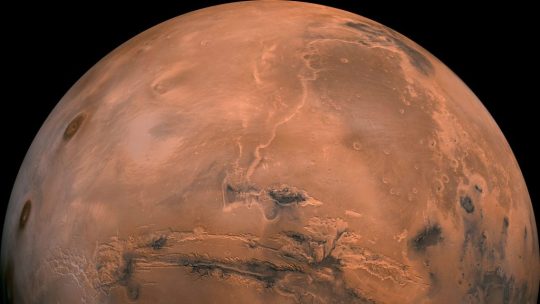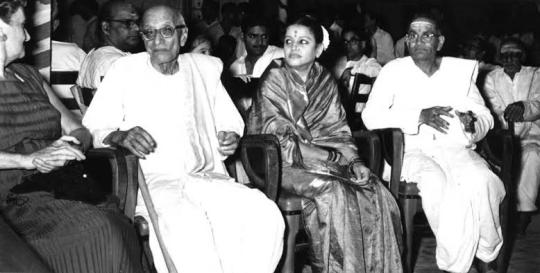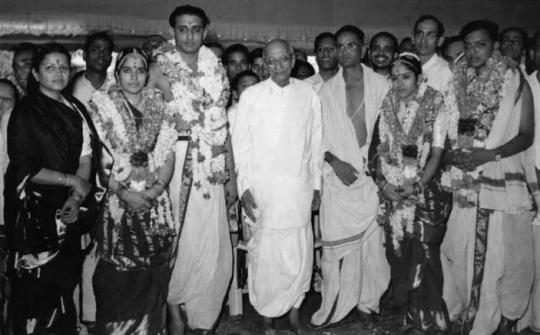#enter indian market
Explore tagged Tumblr posts
Text
India Entry Strategy Unveiled: How Business Consultancies Turn Challenges into Success
India is one of the fastest-growing economies globally, making it a prime target for businesses seeking expansion. However, entering such a diverse and complex market presents unique challenges. From navigating regulatory frameworks to understanding cultural differences, companies must be equipped with a robust strategy to succeed.
This is where business consultancies like Fox&Angel come into play. With in-depth market knowledge, these consultancies provide the expertise needed to develop a tailored India entry strategy that not only addresses challenges but also leverages opportunities. Let’s explore how the right strategy can turn market barriers into pathways for success.
Understanding the Complexities of the Indian Market
India is a country of contrasts. It boasts a large, youthful population and increasing digitalization, but also has a myriad of regulatory environments across its states. One key challenge for businesses is understanding how to navigate this complex regulatory and legal landscape. Additionally, India's market consists of diverse consumer segments, each with its own preferences and expectations.
Without a thorough understanding of these elements, businesses can find themselves lost in translation. That’s why having a consultancy partner is essential for identifying market trends, potential roadblocks, and growth opportunities. A solid understanding of the Indian market is the first step toward a successful entry strategy, and Fox&Angel helps businesses decode these complexities.
How Business Consultancies Help Overcome Barriers
Business consultancies specialize in turning market challenges into actionable solutions. In India, these challenges range from compliance with local laws to adapting marketing strategies to fit regional cultures. Consultancies offer hands-on support, from conducting market research to identifying legal hurdles.
By crafting a localized strategy, consultancies help businesses avoid common missteps such as underestimating the competitive landscape or overestimating demand. The role of the consultancy doesn’t stop at planning; they assist with ongoing implementation, ensuring that the business's entry into the Indian market is not only smooth but sustainable.
Fox&Angel: Leading the Way in Market Entry Solutions
As one of India’s leading business consultancies, Fox&Angel specializes in guiding foreign companies through the intricacies of entering India’s market. Their approach is based on a deep understanding of both local and international business dynamics, offering a holistic view of market entry.
Fox&Angel provides tailored solutions that include market research, legal and regulatory compliance assistance, and partnership building with local businesses. With their hands-on involvement, businesses can rest assured that every aspect of their market entry is optimized for success. Fox&Angel’s proven track record in helping companies overcome challenges sets them apart as the go-to consultancy for businesses entering India.
Key Steps to a Successful India Entry Strategy
Breaking into the Indian market requires a well-structured plan. The first step is market research—understanding consumer behaviour, competitive analysis, and identifying potential partners. This is followed by legal compliance, as India’s regulatory environment can be a hurdle for newcomers.
Next comes the localization of products or services, ensuring they meet the needs and preferences of the target audience. Lastly, an entry strategy must include a robust marketing and sales plan that resonates with local consumers. Fox&Angel ensures each of these steps is tailored to your business, leading to a strong foothold in the Indian market.
Common Pitfalls to Avoid When Entering India
One of the most common mistakes businesses make is underestimating the complexities of India’s legal system. Laws vary from state to state, and failing to comply can lead to fines or even business shutdowns. Another pitfall is failing to localize the product or service. What works in one market may not necessarily work in India.
Rushing the entry process is another mistake. India is a market that requires patience and adaptability. Without proper research, planning, and a flexible approach, businesses risk losing credibility. Fox&Angel helps mitigate these risks by offering a strategic, well-paced market entry process.
Conclusion: Why a Strategic Consultancy Partner Like Fox&Angel is Essential
Entering the Indian market without the right guidance can lead to costly mistakes. A consultancy partner like Fox&Angel is essential for overcoming the challenges that come with entering a new and complex market. By leveraging their expertise, businesses can turn these challenges into stepping stones for long-term success. Whether you’re facing regulatory hurdles or cultural differences, having a solid India entry strategy backed by Fox&Angel can make all the difference.
For more details visit here : https://www.foxnangel.com/ | [email protected] | +917863011011
0 notes
Text
Exploring Investment Opportunities in India's Evolving Real Estate Sector

The Indian real estate sector, a crucial component of the country's economy, has been witnessing significant fluctuations in institutional investment over the past few quarters. According to the latest report released by Vestian, a Bengaluru-based commercial real estate consultant, the sector reported $1.6 billion in institutional investment during the second quarter (Q2) of 2023. While this marks a 41% drop compared to the same period the previous year, it represents a promising 29% increase from the preceding quarter, which ended in March 2023.
The report, "Institutional Investment in Indian Real Estate Q2 2023," highlights the sector's journey over the past five quarters. In Q2 2022, the real estate sector experienced an impressive 81% year-on-year (YoY) increase and a staggering 98% quarter-on-quarter (QoQ) increase, reporting $2.7 billion in institutional investment. However, this growth was short-lived, as the following quarter witnessed an 86% QoQ decline to a mere $0.4 billion in investments.
Despite this setback, the sector showed resilience and bounced back spectacularly in the last quarter of 2022, with a 316% QoQ increase and 103% YoY increase, amounting to $1.5 billion in investments. The roller-coaster ride continued, with a 19% decline in the first quarter (Q1) of 2023, reaching $1.2 billion. These fluctuations underscore the inherent volatility of the real estate sector but also highlight a positive upward trend.
Vestian's CEO, Shrinivas Rao, attributes this upward trajectory to renewed interest from institutional investors, buoyed by India's robust GDP growth and a promising pipeline of upcoming infrastructure developments. The commercial assets segment, encompassing office spaces, retail outlets, co-working spaces, and hospitality projects, has been at the forefront of attracting investments.
In Q2 2023, commercial assets received a staggering $1,400 million in institutional investments, indicating an impressive 101% YoY increase from the previous year and a remarkable 189% surge compared to Q1 2023. This renewed demand for office spaces points to the evolving landscape of the Indian workforce and the growing importance of commercial spaces in the country's economic growth.
Amidst this ever-changing scenario, India's real estate sector continues to present exciting investment opportunities in India. The renewed focus on commercial assets, fueled by the changing work culture and increased demand for office spaces, has created an attractive avenue for investors seeking long-term returns.
Investors are also likely to explore opportunities in upcoming infrastructure projects, which are expected to enhance connectivity and boost the overall real estate market. India's burgeoning economy and steady GDP growth provide a favorable backdrop for investors looking to capitalise on the potential of this dynamic sector.
The Indian real estate sector's journey over the past few quarters has been marked by ups and downs, reflecting its inherent volatility. However, the recent upward trend in institutional investments demonstrates the resilience and potential of this critical sector. Commercial assets, particularly office spaces, have garnered significant attention from institutional investors, indicating a shifting paradigm in India's workforce dynamics.
This post was originally published on: Foxnangel
#Business expansion#business expansion in india#business growth#business opportunities in india#Fox&Angel#FoxNAngel#Indian market#enter indian market#Indian real estate market#Invest in India#Investment#investment opportunities in India
1 note
·
View note
Text
"A Delhi-based engineer has designed a replacement for polystyrene packaging out of “rice stubble” the dead stalks left over after the rice season in India, millions of tons of which are burned every year.
They say wisdom oft comes from the mouths of babes, and Mr. Arpit Dhupar was at first left scratching his head when his young nephew drew a picture of the world with a grey sky.
Everything else was normal, green grass, yellow sun, white and brown mountains; why was the sky grey? It dawned on him that his nephew was drawing the sky as he saw it every year when the rice stubble was burned: grey.
“We shouldn’t live in a world where we have to explain to kids that the sky should be painted blue. It should be a given,” he told The Better India.
So he launched a new business venture called Dharaksha Ecosystems in order to tackle the rice stubble problem. Essentially, the farmers need it cleared off their land asap after harvest. Its high moisture content means it’s not useful for stove fuel, so they burn it in massive pyres.
In his factory, he turns 250 metric tons of rice stubble harvested from 100 acres of farmland in Punjab and Haryana into packaging, while paying the farmers a rate of $30 per acre for something they would usually burn.

Dhupar originally wanted to use mushrooms to rapidly biodegrade baled stacks of rice stubble, but found that the fungus left behind a metabolite that wasn’t biodegradable—in other words, he’d have to create a waste problem to solve a waste problem.
Over time he realized that the filaments that make up the subterranean structure of the mushrooms, called mycelium, were acting as a sort of binding agent, turning the baled stubble into something durable.
“This wasn’t a waste material but could be a usable one,” said Dhupar. “Through bio-fabrication, we could use the stubble waste to create a material similar to [polystyrene], but one that was biodegradable.”
There are a lot of these sorts of sustainable packaging ideas floating around, invented by people who rarely have experience in markets and commerce. This is not the case with Dhupar’s stubble packaging.
He has already prevented over half a million pounds of polystyrene from entering landfills since launching his product, which has numerous, exceptional properties.
They sell around 20 metric tons of their product every month, making about $30.5 thousand dollars per annum, mostly by selling to glassware companies."
-via Good News Network, 3/22/23
#sustainability#recycling#fungi#mycelium#mushrooms#india#delhi#green technology#waste management#rice#agriculture#packaging#glassware#good news#hope
349 notes
·
View notes
Text
Manifesto of the Communist Party
[ Table of Contents | Next ▹ ]
A spectre is haunting Europe – the spectre of communism. All the powers of old Europe have entered into a holy alliance to exorcise this spectre: Pope and Tsar, Metternich and Guizot, French Radicals and German police-spies.
Where is the party in opposition that has not been decried as communistic by its opponents in power? Where is the opposition that has not hurled back the branding reproach of communism, against the more advanced opposition parties, as well as against its reactionary adversaries?
Two things result from this fact:
Communism is already acknowledged by all European powers to be itself a power.
It is high time that Communists should openly, in the face of the whole world, publish their views, their aims, their tendencies, and meet this nursery tale of the Spectre of Communism with a manifesto of the party itself.
To this end, Communists of various nationalities have assembled in London and sketched the following manifesto, to be published in the English, French, German, Italian, Flemish and Danish languages.
I. Bourgeois and Proletarians*
* By bourgeoisie is meant the class of modern capitalists, owners of the means of social production and employers of wage labour. By proletariat, the class of modern wage labourers who, having no means of production of their own, are reduced to selling their labour power in order to live. [Engels, 1888 English edition]
The history of all hitherto existing society† is the history of class struggles.
† That is, all written history. In 1847, the pre-history of society, the social organisation existing previous to recorded history, all but unknown. Since then, August von Haxthausen (1792-1866) discovered common ownership of land in Russia, Georg Ludwig von Maurer proved it to be the social foundation from which all Teutonic races started in history, and, by and by, village communities were found to be, or to have been, the primitive form of society everywhere from India to Ireland. The inner organisation of this primitive communistic society was laid bare, in its typical form, by Lewis Henry Morgan's (1818-1861) crowning discovery of the true nature of the gens and its relation to the tribe. With the dissolution of the primeval communities, society begins to be differentiated into separate and finally antagonistic classes. I have attempted to retrace this dissolution in The Origin of the Family, Private Property, and the State, second edition, Stuttgart, 1886. [Engels, 1888 English Edition and 1890 German Edition (with the last sentence omitted)]
Freeman and slave, patrician and plebeian, lord and serf, guild-master‡ and journeyman, in a word, oppressor and oppressed, stood in constant opposition to one another, carried on an uninterrupted, now hidden, now open fight, a fight that each time ended, either in a revolutionary reconstitution of society at large, or in the common ruin of the contending classes.
‡ Guild-master, that is, a full member of a guild, a master within, not a head of a guild. [Engels, 1888 English Edition]
Our epoch, the epoch of the bourgeoisie, possesses, however, this distinct feature: it has simplified class antagonisms. Society as a whole is more and more splitting up into two great hostile camps, into two great classes directly facing each other – Bourgeoisie and Proletariat.
From the serfs of the Middle Ages sprang the chartered burghers of the earliest towns. From these burgesses the first elements of the bourgeoisie were developed.
The discovery of America, the rounding of the Cape, opened up fresh ground for the rising bourgeoisie. The East-Indian and Chinese markets, the colonisation of America, trade with the colonies, the increase in the means of exchange and in commodities generally, gave to commerce, to navigation, to industry, an impulse never before known, and thereby, to the revolutionary element in the tottering feudal society, a rapid development.
The Communist Manifesto - Part 1
[ Table of Contents | Next ▹ ]
52 notes
·
View notes
Text

New SpaceTime out Monday
SpaceTime 20241209 Series 27 Episode 148
First manned Moon mission in half a century delayed again
NASA have delayed the launch of their Artemis 2 manned Moon mission until April 2026.









Ancient hot water on Mars points to habitable past
A new study has uncovered what may be the oldest direct evidence of ancient hot water activity on Mars.





Eclipse-making double satellite Proba-3 enters orbit
The European Space Agency’s Proba-3 spacecraft have successfully achieved orbit insertion following their launch aboard an Indian Space Research Organisation PSLV-XL rocket.









The Science Report
More confirmation that COVID came from a Chinese Lab in Wuhan.
The collapse of the Conger–Glenzer Ice Shelf in East Antarctica.
Scientists discover the gene that makes some cats orange.
Skeptics guide to whenever you get the feeling you’re being watched
SpaceTime covers the latest news in astronomy & space sciences.
The show is available every Monday, Wednesday and Friday through Apple Podcasts (itunes), Stitcher, Google Podcast, Pocketcasts, SoundCloud, Bitez.com, YouTube, your favourite podcast download provider, and from www.spacetimewithstuartgary.com
SpaceTime is also broadcast through the National Science Foundation on Science Zone Radio and on both i-heart Radio and Tune-In Radio.
SpaceTime daily news blog: http://spacetimewithstuartgary.tumblr.com/
SpaceTime facebook: www.facebook.com/spacetimewithstuartgary
SpaceTime Instagram @spacetimewithstuartgary
SpaceTime twitter feed @stuartgary
SpaceTime YouTube: @SpaceTimewithStuartGary
SpaceTime -- A brief history
SpaceTime is Australia’s most popular and respected astronomy and space science news program – averaging over two million downloads every year. We’re also number five in the United States. The show reports on the latest stories and discoveries making news in astronomy, space flight, and science. SpaceTime features weekly interviews with leading Australian scientists about their research. The show began life in 1995 as ‘StarStuff’ on the Australian Broadcasting Corporation’s (ABC) NewsRadio network. Award winning investigative reporter Stuart Gary created the program during more than fifteen years as NewsRadio’s evening anchor and Science Editor. Gary’s always loved science. He studied astronomy at university and was invited to undertake a PHD in astrophysics, but instead focused on his career in journalism and radio broadcasting. Gary’s radio career stretches back some 34 years including 26 at the ABC. He worked as an announcer and music DJ in commercial radio, before becoming a journalist and eventually joining ABC News and Current Affairs. He was part of the team that set up ABC NewsRadio and became one of its first on air presenters. When asked to put his science background to use, Gary developed StarStuff which he wrote, produced and hosted, consistently achieving 9 per cent of the national Australian radio audience based on the ABC’s Nielsen ratings survey figures for the five major Australian metro markets: Sydney, Melbourne, Brisbane, Adelaide, and Perth. The StarStuff podcast was published on line by ABC Science -- achieving over 1.3 million downloads annually. However, after some 20 years, the show finally wrapped up in December 2015 following ABC funding cuts, and a redirection of available finances to increase sports and horse racing coverage. Rather than continue with the ABC, Gary resigned so that he could keep the show going independently. StarStuff was rebranded as “SpaceTime”, with the first episode being broadcast in February 2016. Over the years, SpaceTime has grown, more than doubling its former ABC audience numbers and expanding to include new segments such as the Science Report -- which provides a wrap of general science news, weekly skeptical science features, special reports looking at the latest computer and technology news, and Skywatch – which provides a monthly guide to the night skies. The show is published three times weekly (every Monday, Wednesday and Friday) and available from the United States National Science Foundation on Science Zone Radio, and through both i-heart Radio and Tune-In Radio.
#science#space#astronomy#physics#news#nasa#astrophysics#esa#spacetimewithstuartgary#starstuff#spacetime#string theory#dimensions#brian greene#cosmology#hubble#hubble space telescope#hubble telescope#hubble tension#edwin hubble#solar system#outer space#planets#jwst#jwst images#james webb space telescope
8 notes
·
View notes
Text
NAHHH I DON'T WANNA GO HOMEEEEEE TvT
Basically I have been travelling since Tuesday, and today is finally the day I'm returning back to Mumbai. So, me and my family had come for a short trip to Delhi and one day to Agra, and it was so mesmerizing!! My mom was so elated when she could finally catch a glimpse of her childhood place, i.e, East of Kailash in Delhi! :D
These days were so fun, istg. I went inside Qutb Minar (and yeah, ofc Chand Sifarish was going on in my mind), Red Fort (Diwan-i-aam had the place where the Emperor sat and addressed his people, yk, an elevated area like we can see in the movie Jodhaa Akbar, his aasan was kept down so that we could have a glimpse of it, it was made out of marble. Entry wasn't allowed inside Diwan-i-khaas, but the intricate designs and carvings of marble there would just keep anyone wondering how the people of that time had such amazing skills when technology wasn't available, and yes, the most amazing part is, EVERYTHING WAS FREAKING HAND-MADE!!!!), Lotus temple (it's beautiful from the outside, but there wasn't really anything to explore inside since it's just a huge prayer room where people came to meditate and pray). We caught glimpses of the India Gate, Rajpath, Rashtrapati Bhawan, Supreme Court, and ofc, a posche area like Connaught Place couldn't be missed!! We explored well-known market places like Karol Bagh, Lajpat Nagar and Sarojini Market.
Now coming to Agra. Our travelling time from Delhi to Agra was around 3.5 hours as we travelled through the expressway. Visited the grand Taj Mahal that day itself, and that sight took over my heart! It looks even more beautiful in reality than it does in pictures! Got to know a lot about the place, the designs which were made of gemstones, visited Shah Jahan and Mumtaz Mahal's tombs inside (photography inside wasn't allowed), and so much more which I can't really explain in detail via this post. The next day, we went to Agra Fort, which covered about 3 km in area (yes it's that huge). Only 25% of the Fort is open for public, the rest of 75% has been occupied by the Indian Army, but just the 25% of the Fort really told us about the history of the Mughals. Mehtaab Bagh, where Shah Jahan wanted to build a black Taj Mahal for him, was visible from the Agra Fort. Building Taj Mahal required 60% of their wealth, and the leftover could not have been used to build another Taj Mahal, hence it could not be completed, and today, we can only see the platform which could be built only.
Fact - their security measures were insane. The front side of the Fort had huge gorges where crocodiles and Gharials were kept. There was also a small area of dense trees having wild animals ahead the gorge. So that means, any intruder who came inside would be instantly killed by these animals. Wild! These animals were kept hungry the whole night and given food in the morning intentionally so that they remain vigilant, hungry and ferocious the whole night in case anyone tries to enter and attack.
Yep, the days went like this!!
😄😄😁😁
8 notes
·
View notes
Text






9th July 1861 saw the birth of the shipping merchant, philanthropist and art lover William Burrell.
William left school at 13 to join his father and brother in the family business as a shipping merchant. He bought his first painting while still at school, with a few shillings he got from selling a cricket bat. It was the beginning of his 75-year collecting career.
His father and grandfather were involved in shipping. and, on his father's death, William and his brother took over the running of the firm. They developed the technique of ordering modern, advanced ships at rock bottom prices when the shipping market was in a slump, thus trading with brand new ships when the market recovered and then selling, at a large profit, when the market was at a peak. William also had an eye for detail and an astute eye for opportunities.
Having learned that a squadron of Royal Navy ships were on a flag waving exercise in distant ports, he realised they were likely to run out of coal and sent some of his ships to one of the ports of call, selling the cargo at a handsome profit.
The brothers amassed a large fortune and Burrell entered into local politics. He was active in the setting up of the Glasgow International Art Exhibition in 1901. At the age of 40 he married Constance Mitchell, daughter of another ship-owner and the following year, with the birth of a daughter, the family moved to a "Greek" Thomson designed house in Great Western Road.
Having again built up a large fleet of modern vessels, the brothers sold most of them during the First World War - at more than three times the building cost. It was at this stage that Burrell effectively retired and devoted the rest of his life to being an art collector.
He had a wide range of tastes but built up an important collection of Chinese ceramics, tapestries, stained glass, silver, bronzes, Persian and Indian rugs and furniture, travelling widely in the process. In 1916 he bought Hutton Castle in the Borders, although he did not move in to the castle until 1927. The same year he was knighted for his public work and services to art. He always had a good eye for a bargain - a 14th century Chines porcelain ewer was bought for 85 pounds and is now worth over 250,000 pounds.
In 1944, he gave almost his entire collection to the city of Glasgow along with 250,000 to construct a building to house it. However, the terms of the bequest (he thought it should be in a rural setting) posed problems and it was not until the 1970s that a building for the Burrell Collection, in Pollok Country Park, was eventually completed.
Just this year, after a major refurbishment and redisplay the Burrell Collection reopened More of the Collection is on show than ever before and exciting new galleries bring the objects to life, including more than 90 digital displays offering interactive and immersive experiences for visitors of all ages.
The new displays also tell the stories of the man behind the Collection, Sir William Burrell and his family.
The Burrell Collection is open 7 days a week, entry is free but donations welcome.
13 notes
·
View notes
Text
India's biggest news organisations are seeking to join a lawsuit against OpenAI, the US startup behind ChatGPT, for alleged unauthorised use of their content.
The news organisations include some of India's oldest publications like The Indian Express, The Hindu, The India Today group, billionaire Gautam Adani-owned NDTV, and over a dozen others.
OpenAI denies the allegations and told the BBC that it uses "publicly available data" that are in line with "widely accepted legal precedents".
On Wednesday, OpenAI CEO Sam Altman was in Delhi to discuss India's plan for a low-cost AI ecosystem with IT Minister Ashwini Vaishnaw.
He said India "should be one of the leaders of the AI revolution" and said earlier comments from 2023, when he said Indian firms would struggle to compete, had been taken out of context.
"India is an incredibly important market for AI in general and for OpenAI in particular," local media quoted him as saying at the event.
The legal case filed against OpenAI in November by Asian News International (ANI), India's largest news agency, is the first of its kind in India.
ANI accuses ChatGPT of using its copyrighted material illegally - which OpenAI denies - and is seeking damages of 20m rupees ($230,000; £185,000).
The case holds significance for ChatGPT given its plans to expand in the country. According to a survey, India already has the largest user base of ChatGPT.
Chatbots like ChatGPT are trained on massive datasets collected by crawling through the internet. The content produced by nearly 450 news channels and 17,000 newspapers in India holds huge potential for this.
There is, however, no clarity on what material ChatGPT can legally collect and use for this purpose.
OpenAI is facing at least a dozen lawsuits across the world filed by publishers, artists and news organisations, who have all accused ChatGPT of using their content without permission.
The most prominent of them was filed by The New York Times in December 2023, in which the newspaper demanded "billions of dollars" in damages from OpenAI and Microsoft, its backer.
"A decision by any court would also hold some persuasive value for other similar cases around the world," says Vibhav Mithal, a lawyer specialising in artificial intelligence at the Indian law firm Anand and Anand.
Mr Mithal said the verdict in the lawsuit filed by ANI could "define how these AI models will operate in the future" and "what copyrighted news content can be used to train AI generative models [like ChatGPT]".
A court ruling in ANI's favour could spark further legal cases as well as opening the possibility of AI companies entering into license sharing agreements with content creators, which some companies have already started doing.
"But a ruling in OpenAI's favour will lead to more freedom to use copyrighted protected data to train AI models," he said.
What is ANI's case?
ANI provides news to its paying subscribers and owns exclusive copyright over a large archive of text, images and videos.
In its suit filed in the Delhi High Court, ANI says that OpenAI used its content to train ChatGPT without permission. ANI has argued that this led to the chatbot getting better and has profited OpenAI.
The news agency said that before filing the suit, it had told OpenAI its content was being used unlawfully and offered to grant the company a license to use its data.
ANI says OpenAI declined the offer and put the news agency on an internal blocklist so that its data is no longer collected. It also asked ANI to disable certain web crawlers to ensure that its content was not picked up by ChatGPT.
The news agency says that despite these measures, ChatGPT picks up its content from websites of its subscribers. This has enriched OpenAI "unjustly", it says.
ANI also says in its suit that the chatbot produces its content verbatim for certain prompts. In some instances, ANI says, ChatGPT has falsely attributed statements to the news agency, hampering its credibility and misleading the public.
Apart from seeking compensation for damages, ANI has asked the court to direct OpenAI to stop storing and using its work.
In its response, OpenAI says it opposes the case being filed in India since the company and its servers are not located in the country and the chatbot has also not been trained there.
News organisations seek to join lawsuit
In December, the Federation of Indian Publishers, which claims to represent 80% of Indian publishers including the Indian offices of Penguin Random House and Oxford University Press, filed an application in court saying that they were "directly affected" by this case and should be allowed to present their arguments as well.
A month later, Digital News Publishers Association (DNPA), which represents leading Indian news outlets, and three other media outlets filed a similar application. They argued that while OpenAI had entered into licensing agreements with international news publishers such as the Associated Press and Financial Times, a similar model had not been followed in India.
DNPA told the court the case would affect the livelihood of journalists and the country's entire news industry. OpenAI has, however, argued that chatbots are not a "substitute" for news subscriptions and are not used for such purposes.
The court has not admitted these applications by the publishers yet and OpenAI has argued that the court should not hear them.
But the judge clarified that even if these associations are allowed to argue, the court will restrict itself to ANI's claims since the other parties had not filed their own lawsuits.
Meanwhile, OpenAI told the BBC it is engaging in "constructive partnerships and conversations" with news organisations around the world, in
Where AI regulation in India stands
Analysts say the lawsuits filed against ChatGPT across the world could bring into focus aspects of chatbots that have escaped scrutiny so far.
Dr Sivaramakrishnan R Guruvayur, whose research focuses on responsible use of artificial intelligence, says that the data used to train chatbots is one such aspect.
The ANI-OpenAI case will lead the court "to evaluate the data sources" of chatbots, he said.
Governments across the world have been grappling with how to regulate AI. In 2023, Italy blocked ChatGPT saying that the chatbot's mass collection and storage of personal data raised privacy concerns.
The European Union approved a law to regulate AI last year.
The Indian government too has indicated plans to regulate AI. Before the 2024 election, the government issued an advisory that AI tools that were "under-testing" or "unreliable" should get government permission before launching.
It also asked AI tools to not generate responses that are illegal in India or "threaten the integrity of the electoral process".
cluding India, to "work collaboratively".
2 notes
·
View notes
Text
Kdrama script idea : Episodes 1 - 2
Episode 1
A middle-aged woman, Han Ae Kyung (Shin Ae Ra), loses her three children and her husband to a car accident. A year later, missing the sound of laughter in her house, she puts out a notice for a boarding house where she rents out the three rooms she had to be able to take care of her depression and her longing to take care of someone. Since she lives in a poor and old neighbourhood, it's not an apartment but a double-storey house, only three people respond : Song Yu Jin (Bae Yu Jin), a half black half Korean model aspirant, Meera Prasad (Nidhi Agarwal), the third daughter of long-time Indian diplomats in Korea and in her graduating year at Seoul National University, and Julie Baek (Julie Han), a Korean-American Arts student at Hong Ik University.
They move in with her, and a lot of fun chaos ensures due to the clash of not only cultures, but also generations. One day, Meera notices a mysterious male figure at night, and one night, follows him up to his apartment above Ae Kyung's. Ae Kyung says that she had rented out the place to a young woman named Min Soo Ji (Choi Soo Ji), but that woman left the house so no one lives there. After Yu Jin also sees a mysterious man enter the house above, Yu Jin and Meera make it their mission to find the man's identity.
Episode 2
One day, while Ae Kyung is outside in the market, suddenly, a woman knocks at their door, asking to be hidden for a few hours. She turns out to be Shin Ja Yeon (Ha Hee Ra), a former TV announcer and the wife of the CEO of a construction company. After her marriage, she was not seen in the public eye until she accused him of adultery, robbery, and severe domestic violence, and won the case in a landslide victory. She got to know that her husband has put a hit on her so he doesn't lose his money, and so Ja Yeon is on the run. Luckily, no one knows her face anymore except the people around her husband and her in-laws.
The girls shelter Ja Yeon in the house and try to phone Ae Kyung to inform her, but she's not picking up the phone. Ja Yeon sees one of her husband's company cars in the road and holes herself up in the bathroom, and Ja Yeon's husband, CEO Kang Seung Ho (Cheon Ho Jin), arrives at the house door just as Ae Kyung arrives. He asks if Ae Kyung has seen a woman that looks like Ja Yeon here in the street; luckily, Ae Kyung doesn't snitch even after seeing Ja Yeon's shoes in the entrance of her house. She doesn't say a word and enters in, and locks the door and orders all the windows to be closed.
Ja Yeon, who locked herself into the bathroom cannot answer to Ae Kyung's calls, and the girls bust down the door of the bathroom just o find her in the midst of a panic attack. They manage to calm her down, and Ae Kyung demands an explanation. After Ja Yeon calms down, she explains her situation, and asks to stay just a night so she can make arrangements for her escape. Ae Kyung agrees reluctantly, worring about another mouth to feed, when they turn on the news and see the news that "Shin Ja Yeon" has apparently been killed in a car accident in the Han River, and that suspicions are on Kang Seung Ho. The real Ja Yeon is very confused, but gets a call from one of her assistants that they planted this story so she can live in peace. She first berates them for not telling her, and is still worried that she might not be able to move out of the country as was her original plan. She needs to fly to either Europe or Great Britain, where her only relatives live, and she begins looking for flights, hoping to be able to escape.
Meanwhile, Yu Jin and Meera piece together more information about the mystery man : He comes home every day at 11:45 pm, and on Fridays, he has a wonky step, meaning that he comes home from drinking. Owing the complete silence, they gather that he lives alone in the house that was rented out to Min Soo Ji. Worried that something might have happened, they decide to try and find information on her.
3 notes
·
View notes
Text
A Night to Remember - 2
She monotonously paced around the room to burn off her restlessness. She repeated the principles of management and profit planning, hoping it’ll ground her.
Her mind and body were far too desperate to know about him. Did he already know she was here? Was he happy or sad to see her? Does he want her back? Should she play hard or fall into his arms?
Maybe she should just avoid him, treat him as a stranger she weakly sighed
Her thoughts raced a mile an hour, punctuated by the loud rainfall outside. The thought of crossing the waterlogged grounds irritated her, but at least she’ll be left alone with her thoughts for now.
This family’s problems are as intricate as their mansion’s décor she chuckled. Their long term CAs- Anirudh & Pazhuvur- were a well known firm run by two senior professionals. They were from nobility themselves and handled elite clients. Though well meaning, they needed some help to untangle their client’s mess given the ever changing business laws.
She found a remote under the newspaper stand faced it towards the small, early 2000s BPL TV. She tsked when it didn’t switch on. Restlessness made her bang the remote on the sofa armrest repeatedly -and voila! The TV worked.
She shifted through the channels….. ethirneechal serial, suryavamsam movie,teleshopping, BBC, live telecast of a temple..no no no she chanted before settling on an Indian news channel.
An immaculately dressed man addressed the eager reporters. “Pandyan corp will venture into buying other heritage properties too”, he said that they’d already eyed a few old forts and palaces to turn into tourist sweetspots.
“Sir, you had already announced such a project 2 years ago, but it failed to take off” clamoured a journo
The official smoothly assured them that this time it will take off, dismissing the previous plan that fell through.
Nandini smirked, thinking of how they lost their most lucrative purchase due to her ‘skills’.
The Pandya’s were the royal clan who lost the most to colonialism. But they persevered, ignored public criticism, cut costs and started a real estate business- unthinkable for a clan of their stature. They’d changed their last remaining fort into a Heritage hotel and entered the luxury real estate market. Other noble clan’s looked down on them then, only to regret their decisions now.
The Chozhas were one of them. They had maintained autonomous rule long enough, so they settled into a complacent lifestyle. Their palatial homes (including their current residence), agricultural lands overseen by locals all seemed grand. Their money was locked up in trust funds and wills, rendering them unable to withdraw funds for their immediate needs. Their business investments were failing and it looked like they had to sell atleast one property.
Pandyas might’ve modernized into a corporate now, but their executive committee’s bitterness remained. They had lost a lot to the Chozhas but couldn’t retaliate when the British slammed them with the ‘Doctrine of Lapse’.
Their core team, on behalf of the young son of their late CEO, was full of “old guards”- people from families who’ve long been faithful servants of the owner’s kingly forefathers.
They were the top players in the luxury segment, their plan to buy heritage properties was just a century old thirst to one up the Chozhas
She’d interned with them as a gangly 23 year old fresh out of uni. The opportunity was great- they were one of the patrons of her college’s scholarship program. Veer pandyan had personally taught her, despite knowing real estate wasn’t her main interest.
The talent scouts at HR had run a background check, the results of which intrigued the big boss.
Born and adopted in Madurai, moved to a suburb of Thanjavur at 10 where her dad worked as a Archagar in temple before moving to Chennai after grade 11.
It was the last fact that caught his eye.
No sane Indian family, no matter their financial woes would shift cities when their child has completed 11th. Something drastic must’ve occurred. It no doubt involved the Chozhas as nothing moved from that estate without their consent.
The pandyan corp executives were nice to her. Really nice, that some of the older employees began envying her- an intern! Veer pandyan had a friendly uncle demeanor as he taught her the practicalities of real estate, investments and predicting markets. But soon his real interest began to show, he tried to pry into her past.
“It’s just odd, you know, you did grade 11 in one city and grade 12 in another “ he innocently asked.
Hoping to tolerate the intrusion for the sake of her job, Nandini replied “ My dad found a better position in Chennai, besides my brother wanted to join the OTA” hoping it sounded rational. She loved using her military intelligence officer bro as an excuse.
He left it for the day, but circled back to it often. “You went to THAT school right? The one where the Chozha kids studied… did you talk to them?”
Nandini cursed herself for being so naïve. She initially presumed he wanted to know about her past genuinely.
The topic was too painful. A sore spot she rarely thought of even in private- afraid of the emotional fallout. No amount of casual dismissal of her acquaintance with them sated her boss.
The heckling of journalists of the suited man snapped her to the present.
She began chuckling madly at the TV, at the slimy man trying to convince the reporters that all was well in paradise. Uncaring of been seen, she wheezed with laughter, knowing all wasn’t well- they had her to thank for that!
The low grumbling of the skies masked her outburst and made her anticipate the next loud thunder. It settled into silence but she wasn’t completely at peace yet. She’d stolen biscuits, borrowed a blanket and used the living room of her former flame.
She looked every bit the confident career woman she was, but his presence threw her off the cool headspace she maintained. And she’d have to leave this place anyway.
A fainted shadow fell on the foyer. “The rain must’ve messed with the porch lights” Nandini dismissed it and continued to change the channels. She chose to watch a Djokovic vs Nadal match to pass time. Engrossed as she was in their rally, she didn’t notice the shadow shift closer to her.
The door lock clicked and forced her to notice. “holy shit please don’t be a murderer” she inwardly thought before deciding to turn.
Her stuff shoulders turned, her eyebrows curled in fear but the sight of the form at the door step made them turn up in anger. “You…you brat!” Nandini bared her teeth as the tormentor of her dreams just smirked
@nashibirne @nspwriteups @favcolourrvibgior @vibishalakshman @thelekhikawrites @dr-scribbler @kovaipaavai @budugu @dosai-maavu @matka-kulfi @curiousgalacticsoul @harinishivaa @chiyaanvikram @celestesinsight @inveter @deepti1011 @itszhunotz @babayagahunt @thegleamingmoon @maisadalawa @ragkee @inlovewithfictionalbeings @happysharkdragon @gowrimenonop-1 @ramcharanobsessed @nature-writes29 @voidsteffy @whippersnappersbookworm @hollogramhallucination @thereader-radhika @sowlspace @rang-lo @nirmohi-premika @love-ps1ff @canonless5 @sampigehoovu @ambidextrousarcher
#ponniyin selvan fanfic#ponniyin selvan#nandhini#aditha karikalan#nandini x aditha#ponniyin selvan fanfiction#nandini x karikalan
30 notes
·
View notes
Text
Assam Tea: Discover the Richness of India's Finest Brew
Assam, located in the northeastern region of India, is globally celebrated for its premium tea. Known for its rich, malty flavor and vibrant amber color, Assam tea has been a staple in households and cafes worldwide. Its unique characteristics stem from the region's favorable climate, fertile soil, and expert cultivation techniques perfected over centuries. Let's dive into the world of Assam tea and uncover what makes it one of the finest brews on the planet.
The Origins of Assam Tea
Assam's tea story began in the early 19th century when indigenous tea plants were discovered growing wild in the region. Recognizing its potential, British planters initiated large-scale cultivation, making Assam one of the first Indian states to enter the global tea trade. Today, Assam is home to over 850 tea estates, producing nearly 50% of India's total tea output.
The Assam region's distinct geography—low altitude, ample rainfall, and high humidity—creates the perfect environment for growing Camellia sinensis var. assamica, the tea variety native to this area. The result is a tea known for its briskness, robustness, and signature malty undertone.
Why Assam Tea Stands Out
Flavor Profile Assam tea is renowned for its bold and rich flavor. Unlike lighter teas, it has a full-bodied taste that pairs beautifully with milk and sugar, making it the base for beloved blends like masala chai and English breakfast tea.
Health Benefits Assam tea is not just about taste—it's packed with antioxidants like flavonoids and catechins that promote heart health, improve digestion, and boost immunity. Its moderate caffeine content also makes it a perfect pick-me-up without the jitters associated with coffee.
Cultural Significance Tea is deeply woven into Assamese culture. From traditional tea ceremonies to its integral role in daily life, tea reflects Assam's identity and pride.
The Role of Assam Tea Traders
Behind every steaming cup of Assam tea is the dedication and expertise of tea traders. These professionals connect Assam's lush plantations with tea lovers across the globe. Here's how Assam tea traders contribute to the industry:
Quality Assurance: Tea traders work closely with estates to ensure that only the finest leaves are harvested, processed, and packaged.
Sustainability Initiatives: Many traders advocate for ethical and eco-friendly practices, supporting fair wages for workers and sustainable farming methods.
Global Reach: Assam tea traders bridge the gap between local estates and international markets, ensuring that the rich flavors of Assam reach tea enthusiasts everywhere.
Types of Assam Tea
Assam tea comes in various forms, each catering to different preferences:
Black Tea: The most popular variety, known for its bold taste and strong aroma.
Green Tea: A milder, healthier option with a fresh, grassy flavor.
White Tea: Delicate and less processed, this variety is prized for its subtle flavor and high antioxidant content.
CTC Tea: "Crush, Tear, Curl" tea is processed into small granules, perfect for strong and quick brewing.
How to Brew the Perfect Cup of Assam Tea
To fully enjoy the richness of Assam tea, follow these steps:
Choose Quality Leaves: Opt for whole-leaf Assam tea or buy from reputed tea traders for the best experience.
Water Temperature: Boil water to around 90–95°C for black tea and 80–85°C for green or white tea.
Steeping Time: Steep for 3–5 minutes, depending on your desired strength.
Additives: Assam tea pairs well with milk, sugar, or spices, but it’s equally delightful when enjoyed plain.
Supporting Local Tea Traders
By purchasing Assam tea from local traders, you contribute to the region's economy and support sustainable practices. Many tea traders in Assam are now embracing organic farming, offering a healthier and eco-friendlier choice for consumers. Look for certifications like Fair Trade or Organic to ensure your tea is ethically sourced.
Conclusion
Assam tea is more than just a beverage; it's an experience steeped in history, culture, and craftsmanship. Whether you’re a tea connoisseur or a casual drinker, exploring Assam tea is a journey worth taking. Its rich flavor, health benefits, and cultural significance make it a standout brew on the global stage.
So, the next time you sip on a cup of Assam tea, take a moment to appreciate the hard work of the tea traders and the beauty of Assam’s lush tea gardens. With every cup, you’re not just tasting a drink—you’re savoring a legacy.
2 notes
·
View notes
Text
This day in history

#15yrsago Best practices for economic collapse: Long Now talk https://cluborlov.blogspot.com/2009/02/social-collapse-best-practices.html
#10yrsago San Francisco police beat up and detain Good Samaritans who call 911 and perform first aid on accident victim https://medium.com/indian-thoughts/good-samaritan-backfire-9f53ef6a1c10
#10yrsago Dems appoints RIAA’s man in Congress to House Judiciary Subcommittee on Courts, Intellectual Property and the Internet https://www.techdirt.com/2014/02/12/another-friend-recording-industry-joins-house-subcommittee-courts-intellectual-property-internet/
#10yrsago Senator Rand Paul sues US government over NSA spying https://arstechnica.com/tech-policy/2014/02/us-senator-sues-president-obama-to-stop-nsa-metadata-dragnet/
#5yrsago Who can forget those scenes in Count Zero where they all stand around eating soup? https://memex.craphound.com/2019/02/14/who-can-forget-those-scenes-in-count-zero-where-they-all-stand-around-eating-soup/
#5yrsago Bossfight: Allstate Insurance enters the Right to Repair fight, loans its lobbyists to fight Apple https://www.vice.com/en/article/nex3dz/insurance-giant-allstate-buys-icracked-phone-repair-company-joins-right-to-repair-movement
#5yrsago Installing a root certificate should be MUCH scarier https://www.eff.org/deeplinks/2019/02/powerful-permissions-wimpy-warnings
#5yrsago Ex-NSA whistleblower says she and other US ex-spooks targeted Americans on behalf of UAE https://www.reuters.com/investigates/special-report/usa-spying-raven/
#5yrsago LA Times demands that reporters sign away rights to books, movies and other works they create while working at the paper https://latguild.com/news/2019/2/12/press-release-los-angeles-times-guild-pushes-back-against-managements-proposed-intellectual-property-policy
#5yrsago Even without explicit collusion, pricing algorithms converge on price-fixing strategies https://cepr.org/voxeu/columns/artificial-intelligence-algorithmic-pricing-and-collusion
#5yrsago Most adults are incapable of understanding most online terms of service https://papers.ssrn.com/sol3/papers.cfm?abstract_id=3313837
#5yrsago How Epson’s patent trolling is killing the EU market for replacement ink https://www.openrightsgroup.org/blog/patently-unfair-epson-takedowns-continue/
#5yrsago The Final Version of the EU’s Copyright Directive Is the Worst One Yet https://www.eff.org/deeplinks/2019/02/final-version-eus-copyright-directive-worst-one-yet
#5yrsago Beyond GIGO: how “predictive policing” launders racism, corruption and bias to make them seem empirical https://papers.ssrn.com/sol3/papers.cfm?abstract_id=3333423
#1yrago Nathan J. Robinson's "Responding to the Right: Brief Replies to 25 Conservative Arguments" https://pluralistic.net/2023/02/14/nathan-robinson/#arguendo
12 notes
·
View notes
Text
Karate History & Box Art Redemption

About a year and a half ago, I mentioned Jordan Mechner's seminal 1984 game Karateka in a post about Sifu, a newly-released beat ‘em up with a similar martial arts theme and tough-as-nails difficulty level. Sifu's a good game that garnered a certain amount of scrutiny from people who pointed out that it was an interactive experience steeped in Chinese culture but developed by a predominantly white team. This is not inherently a bad thing (Sifu’s devs did a respectful job), but considering Western media’s track record of misrepresenting Asia as an exotic place full of Fu Manchu-mustachioed bad guys and subservient women, it’s always worthwhile to be cautious. At any rate, Sifu reminded me a lot of Karateka, another game by a non-Asian creator that owed its lifeblood to Asian culture...and even featured the main protagonist and his love interest as white on the box art, despite the fact that the game clearly takes place in medieval Japan.
The Making of Karateka, a just-released interactive documentary by Digital Eclipse, explains the logic behind this decision via extensive notes that detail every step of the game's creation. From what I can discern, the box art design doesn’t appear to have been Jordan Mechner’s call. (Though the playable Karateka beta included in this package reveals that Mechner had some wacky non-Japanese names in mind for the game’s villain and damsel in distress... Akuma and Mariko were once dubbed “Kratang” and “Tiger Lily.” Yikes!) Rather, publisher Brøderbund’s marketing team seems to have been the division that assigned artist Thomas Blackshear II to paint the cover, instructing him that the titular Karateka was supposed to look like "a young Chuck Norris" or "Luke Skywalker" while Mariko should resemble an "American blonde." Meanwhile, only Akuma was specified as "Japanese."


Brøderbund’s promotional strategy followed the typical American metality of the era: it's okay to portray a bad guy as a foreign race, but leading men and ladies should be white and ideally blonde. It didn't have to be this way, since Bruce Lee had dominated cinemas with Enter the Dragon only a decade earlier and proved that audiences could accept an Asian hero. But Brøderbund decided to go the safe route, despite the fact that Thomas Blackshear is a person of color renowned for his Black and American Indian paintings. (He also portrayed a decidedly unblonde and possibly Asian main character in his early cover sketches.)
My intention here is not to hate on Karateka or any of the individuals involved. The original Karateka game for the Apple II did, after all, feature white hair for its leading man's sprite that could easily be interpreted as blonde (though that was likely due to hardware color limitations more than anything else), and Brøderbund justified their decision by claiming they were inspired by the multicolored hair of Japanese manga characters. (Eh, sure.) Also, if we're being honest about it, Blackshear's final art is a beautiful composition even with the questionable racial depictions.

Rather, I'm fascinated with Karateka's box as an example of mildly problematic '80s promotion, and I love how we gain insight into its development thanks to Digital Eclipse' painstaking efforts with what they call the first in their "Gold Master Series" of playable documentaries. Aside from these marketing details, The Making of Karateka delves into Jordan Mechner's early life in precise timeline fashion, letting us explore planning documents, early rotoscoping footage and prototypes of not only Karateka, but the games that preceded it, including Mechner's take on Asteroids and a shooter he was trying to develop called Deathbounce. There's even glimpses at the bones of a platforming puzzle game that started out as Karateka II and would later evolve into Prince of Persia.
Just about every review of The Making of Karateka stresses how this package sets a new standard for preservation in the video game industry, a business that is terrible at chronicling its own past. I won't repeat these arguments too much other than to say that I fullheartedly agree. Behind the scenes featurettes used to be a thing when it came to games — as a kid, I remember being utterly absorbed with the "Making of King's Quest VI" footage that came included on the CD-ROM — but these days you're unlikely to see too many of them, especially for titles that were released decades ago. In a world where Nintendo has yet to localize Mother 3 and customers need to rely on emulation and all types of hacks to revisit old games, Digital Eclipse's commitment to curating digital museums dedicated to works like Karateka is an incredible worthy goal — possibly one of the most important goals that a video game company has ever embarked upon. I can't wait to see more volumes in the Gold Master Series, and can think of many potential entries off the top of my head. Pitfall! Ultima! Doom! Maybe even one day...Sifu? (Likely a stretch, but stranger things have happened.)


But going back to the discusson of art for a moment, one of the most monumental things that The Making of Karateka does is offer a "remastered" version of its title game, complete with impressive graphical flairs, a more managable difficulty level, and even...revised box art. While Thomas Blackshear's original Karateka painting is still displayed prominently throughout the package, when you go to select Karateka Remastered under the list of playable games, you'll see a new mockup box. No longer is Akuma a dehumanized Japanese baddie, no longer is Mariko an all-American girl, no longer is the titular Karateka Luke Skywalker. All three characters are Asian...and get this, the central Karateka is not only Asian, but blonde too.
In one swift stroke, The Making of Karateka not only captures history and chronicles its mistakes, but also revises them for a bright future. Take that, 1984 marketing.

Update: An earlier version of this article stated that the new mockup cover art was illustrated by Digital Eclipse in-house artist Mae Livingston. Mike Mika, the president of Digital Eclipse, reached out to me on Twitter to explain that while Mae was responsible for Karateka Remastered's in-game artwork, the actual box image was made via Midjourney, and the characters were tweaked multiple times to look more culturally appropriate. He added that this methodology was an experiment that Digital Eclipse does not intend to rely on in the future.
I have very mixed opinions on AI art, and I do wish this box had been created by a human. I don't know if I would've written this piece if I'd known that the artwork was made by Midjourney, frankly. Nevertheless, I appreciate Mike actually reaching out to me, and the ultimate message of this article still stands. I hope Digital Eclipse considers the power that an image like this holds — especially for multiracial people like myself — and chooses human artists in the future.
21 notes
·
View notes
Text
Soybean Export from India: Trends, Data, & Market Outlook for 2025

India's agricultural exports continue to gain momentum, with soybean standing as a key contributor. Known for its high nutritional value and diverse industrial applications, soybeans play a pivotal role in the global agri-commodity market. As the world’s demand for plant-based proteins and sustainable oils increases, India's position as a significant player in soybean exports strengthens. This article delves into the current trends in soybean export from India, examines soybean export data, highlights key soybean exporters in India, and explores major soybean-exporting countries for 2024-2025.
The Landscape of Soybean Export from India
India has emerged as a prominent exporter of soybeans, contributing significantly to global trade. Factors such as robust agricultural policies, advancements in farming techniques, and a focus on export-oriented production have bolstered India's soybean export capabilities.
In the 2024-2025 period, soybean exports from India are expected to grow due to increasing international demand. Indian soybeans are sought after for their quality, competitive pricing, and adherence to international standards. The primary export destinations for Indian soybeans include Southeast Asia, the Middle East, and European countries.
Soybean Export Data for 2024-2025
Tracking soybean export data reveals significant insights into India’s performance in the global market.
Volume and Value of Exports: India exported approximately 2.5 million metric tons of soybeans in the fiscal year 2023-2024, generating over $1.2 billion in revenue. The 2024-2025 projections suggest a 10-12% growth, driven by increasing demand from new and existing markets.
Major Importers of Indian Soybeans:
Indonesia and Vietnam: These countries use Indian soybeans primarily for feed and food processing industries.
United Arab Emirates (UAE): A significant importer due to its booming food industry and demand for plant-based products.
European Union (EU): Particularly Germany and the Netherlands, where soybeans are used for biofuels and plant-based protein products.
Export Growth Drivers:
India’s strategic position in Asia ensures shorter shipping times to key markets.
Increased global preference for non-GMO soybeans, a segment where India has an advantage.
Key Soybean Exporters in India
India’s soybean export industry is supported by numerous stakeholders, including farmers, processing companies, and export houses top soybean exporters in India are.
SOPA (Soybean Processors Association of India): SOPA plays a vital role in promoting soybean exports from India. It ensures the quality and branding of Indian soybeans, making them competitive in global markets.
Major Exporting Companies:
ITC Limited: Known for its robust supply chain and adherence to quality standards.
Adani Wilmar: A significant player in agri-exports, including soybeans and soy-derived products.
Ruchi Soya Industries: One of India's largest exporters, supplying non-GMO soybeans globally.
Emerging Players: Smaller exporters and agri-tech startups have also entered the market, leveraging technology to enhance productivity and streamline exports.
India’s Position Among Soybean Exporting Countries
Globally, India ranks among the top 10 soybean exporting countries. However, countries like Brazil, the United States, and Argentina dominate the export landscape.
Global Competitors:
Brazil: The world’s largest soybean exporter, primarily supplying China.
United States: A major exporter with advanced farming technology and extensive trade networks.
Argentina: Known for its high-quality soymeal exports.
India’s Competitive Edge:
Organic and non-GMO soybeans.
Competitive pricing compared to Western exporters.
Proximity to Asian and Middle Eastern markets.
Challenges in Competing Globally: While India has advantages, challenges such as inconsistent yield, fluctuating prices, and logistical issues need addressing to solidify its global standing.
Emerging Trends and Opportunities in Soybean Export
The soybean industry is undergoing transformation due to changing consumer preferences and technological advancements. Key trends for 2024-2025 include:
Shift to Plant-Based Diets: The rise of veganism and plant-based diets globally is driving demand for soy products, including tofu, soy milk, and soy protein isolates.
Sustainability and Traceability: Exporters focusing on sustainable farming and traceability in supply chains will have a competitive edge in international markets.
Government Support: Initiatives such as export incentives, enhanced logistics, and trade agreements are expected to boost soybean exports.
Value-Added Soy Products: Diversifying into soy-derived products like soymeal, soy oil, and soy protein can open new revenue streams for Indian exporters.
Challenges Facing Soybean Export from India
Despite its growth potential, the industry faces several hurdles:
Climate Change: Unpredictable weather patterns can impact crop yields.
Infrastructure Bottlenecks: Limited storage and transportation facilities hinder efficient exports.
Price Volatility: Global soybean prices are influenced by geopolitical and economic factors, impacting Indian exports.
Addressing these challenges through policy reforms and industry collaboration will be critical for sustained growth.
Future Outlook for Soybean Export from India
The future of soybean exports from India looks promising. With the global demand for soybeans expected to rise by 15-20% in the next decade, India has the opportunity to enhance its market share. Key strategies for growth include:
Investing in sustainable farming practices.
Strengthening trade relations with emerging markets like Africa and Latin America.
Promoting value-added soy products through branding and innovation.
Conclusion
Soybean export from India are poised for remarkable growth in the 2024-2025 period. By leveraging its strengths in quality production and strategic geographic positioning, India can expand its footprint in the global soybean market. However, addressing challenges like climate change, infrastructure, and price volatility will be essential for realizing its full potential. With the concerted efforts of farmers, exporters, and policymakers, India is set to cement its position as a leading player in the global soybean trade.
#soybean export from India#soybean export data#soybean exporters in India#soybean exporting countries#trade data#global trade data#international trade
2 notes
·
View notes
Text
What is Mutual Fund?
A mutual fund is a type of investment vehicle that pools money from multiple investors to invest in a diversified portfolio of securities such as stocks, bonds, and other assets. Investments in securities are spread across a wide cross-section of industries and sectors and thus the risk is reduced.
It is managed by a professional fund manager or an asset management company (AMC) who makes investment decisions on behalf of the investors.
Mutual funds offer good investment opportunities to the investors. Like all investments, they also carry certain risks
SEBI formulates policies and regulates the mutual funds to protect the interest of the investors.
OVERVIEW OF MUTUAL FUNDS INDUSTRY IN INDIA
The mutual fund industry in India was set up through a combination of regulatory changes, legislative reforms and the entry of various market players.
Unit Trust of India- UTI was founded in 1964, which is when the mutual fund sector in India first started to take off. To mobilize public funds and invest them in the capital markets, UTI was established as a statutory body under the UTI Act, 1963. The idea of mutual funds was greatly popularized in India because to UTI.
Regulatory Framework-In India, the mutual fund industry's regulatory structure began to take shape in the 1990s. The Securities and Exchange Board of India (SEBI) Act, which established SEBI as the governing body for the Indian securities markets, was passed in 1993. Among other market intermediaries, SEBI was responsible with regulating and supervising mutual funds.
The SEBI (Mutual Funds) Regulations,1996- This regulation established the legal foundation for the establishment, administration, and operation of mutual funds in India. These regulations outlined the standards for investor protection, investment restrictions, disclosure requirements, and eligibility requirements for asset management companies (AMCs).
Introduction of Private Sector Mutual Funds: UTI was the only active mutual fund provider in India prior to 1993. Private sector mutual funds were nevertheless permitted to enter the market as a result of the liberalization of the financial sector and the opening up of the Indian economy. Many domestic and foreign financial organizations launched their own AMCs and entered the mutual fund industry.
Product Line Evolution: The mutual fund sector in India has grown and increased its product selection throughout the years. Mutual funds initially mainly offered income and growth opportunities. To address various investor needs and risk profiles, the industry did, however, offer a wider range of products, such as equity funds, debt funds, balanced funds, and specialist sector funds.
Investor Education and Awareness: Serious efforts have been made to educate and raise investor awareness in order to encourage investor involvement in mutual funds. Industry groups, AMCs, and SEBI have run investor awareness campaigns, distributed instructional materials, and supported systems for resolving investor complaints. Systematic Investment Plans (SIPs) were introduced, and this was a significant factor in luring individual investors
Technological Advancements-The mutual fund sector in India has embraced technological development, making it possible for investors to access and invest in mutual funds through online platforms and mobile applications. Investors can now transact, track their investments, and get mutual fund information more easily thanks to digital platforms.
The mutual fund industry in India has developed into a strong and regulated sector through regulatory changes, market competition, and investor-centric initiatives. The sector keeps expanding, drawing in more investors and providing them with a wide variety of investment possibilities around the nation.
#business#writing#investment#mutual funds#security market#money#sebi registered investment advisor#equity#make money tips#savings#financial#raise funds#funds#profit#return#growth#reading#knowledge#personal finance#income
42 notes
·
View notes
Text
The Other 'Kalki' - T. Sadasivam and the origins of the 'Kalki' magazine
Thiagaraja Sadasivam, better known as 'Kalki' Sadasivam, was an Indian freedom fighter, singer, journalist and film producer. In his later years, he'd come to be more well known as the husband of the renowned musician M.S. Subbulakshmi.


R. Krishnamurthy, better known as Kalki, was a Tamil writer, journalist, poet, critic and Indian independence activist who wrote under several pen-names like Tumbi, Tamil Teni, Karnatakam, Langulan, Agastyar, Ra Ki, Yaman, Vivasayi, Petron, Guhan, Tamil Magan, etc. but what captured his readers' fancy is the pseudonym 'Kalki'.

T. Sadasivam and R. Krishnamurthy worked at Gemini Vasan's (who owned the legendary Gemini Studios as well) 'Ananda Vikatan' in 1930s but both left the magazine in the late 1930s, due to personal (Sadasivam's marriage with MS was scandalous for the times) and political (Vasan often got into trouble with the British government due to Krishnamurthy's works) reasons.

From T. J. S. George's M.S Subbulakshmi: The Definitive Biography :
Sadasivam must have admired his own luck at that point. For he had not only the most marketable literary property at his disposal but also the most valuable musical property as well . . . With Rajagopalachari giving his approval to the idea, all three were inspired to take the plunge.

Krishnamurthi, Rajaji, Sadasivam

Rajaji, M S Subbulakshmi, Sadasivam
The name of the magazine suggested itself. Krishnamurthi’s writings had spread his pen name ‘Kalki’ so far and wide that Kalki as a magazine title would have the priceless advantage of instant recognition. That indeed turned out to be the case. Not only the originator of the pen name but also the manager-proprietor too would henceforth be identified by the magazine’s name; they would always be known as Kalki Krishnamurthi and Kalki Sadasivam.
Thanks to MS’s film successes, he found many a wealthy financier knocking at his doors ready to invest in her. But Sadasivam was not open to their ideas; they had to be open to his. Such a stipulation kept potential investors at bay until a film director named Y. V. Rao came along. His idea sounded preposterous . . . He would make up the shortfall in the Kalki capital, he said, if Subbulakshmi would act as Narada in a film he was planning to make, titled Savithri. Sadasivam felt scandalized. MS as a male character!
For Rao that was precisely the point. MS in male attire would act as an irresistible magnet for the masses . . . After holding discussions with Rajaji and Krishnamurthi and after making a few teasing references to the idea in conversation with MS herself, Sadasivam said yes to Rao . . .

The first issue of Kalki
It took no time for Kalki to make a mark. That period was characterized by tremendous turbulence as a result of the war in Europe and Asia and the independence movement in India entering decisive phases. . . . Every day was a news day. The public appetite was keen for both incisive political commentaries and elevating literary works. Kalki Krishnamurthi’s pen satisfied the popular taste. Sadasivam’s managerial prowess found new inspiration in proprietorship. Combining creative credibility with entrepreneurial vitality, Kalki quickly grew into a part of Tamil history. Krishnamurthi, Sadasivam and Subbulakshmi, with Rajagopalachari hovering as a ‘presiding deity’, symbolized the vanguard of a virtual cultural renaissance in the Brahminic world of Madras. It would reach a peak with new historical novels appearing in a serialized form in the pages of the magazine—Ponniyin Selvan and Sivakamiyin Sapatham.
Krishnamurthy's daughter Anandi was married to Sadasivam's nephew Ramachandran and Sadasivam's daughter Vijaya was married to Krishnamurthy's son Rajendran.

Krishnamurthi, Anandi (sitting on his lap) and Ramachandran

MS Subbulakshmi, Sadasivam's elder daughter musician Radha with husband Viswanathan, Rajaji, Sadasivam, younger daughter Vijaya with her husband Rajendran
@willkatfanfromasia @favcolourrvibgior @celestesinsight @sampigehoovu @ambidextrousarcher @sakhiiii @whippersnappersbookworm
26 notes
·
View notes